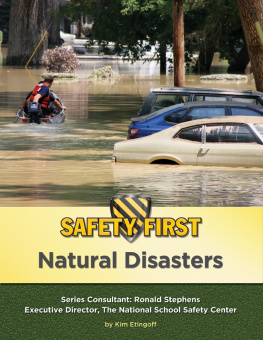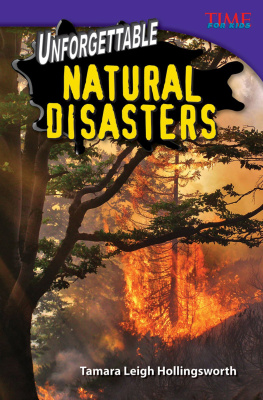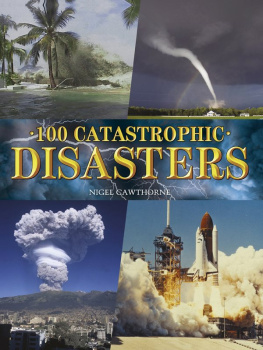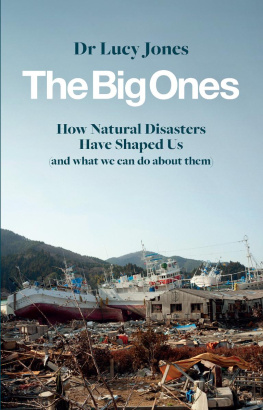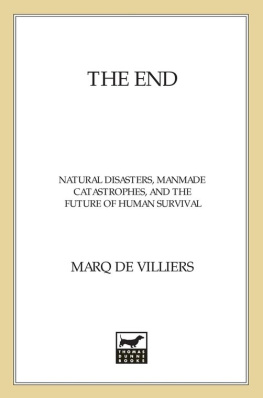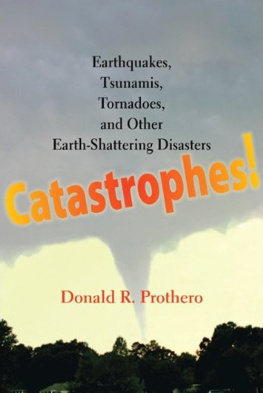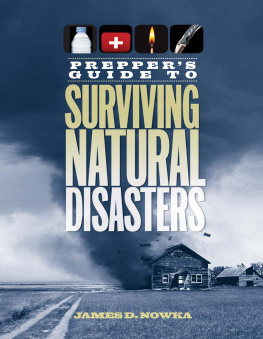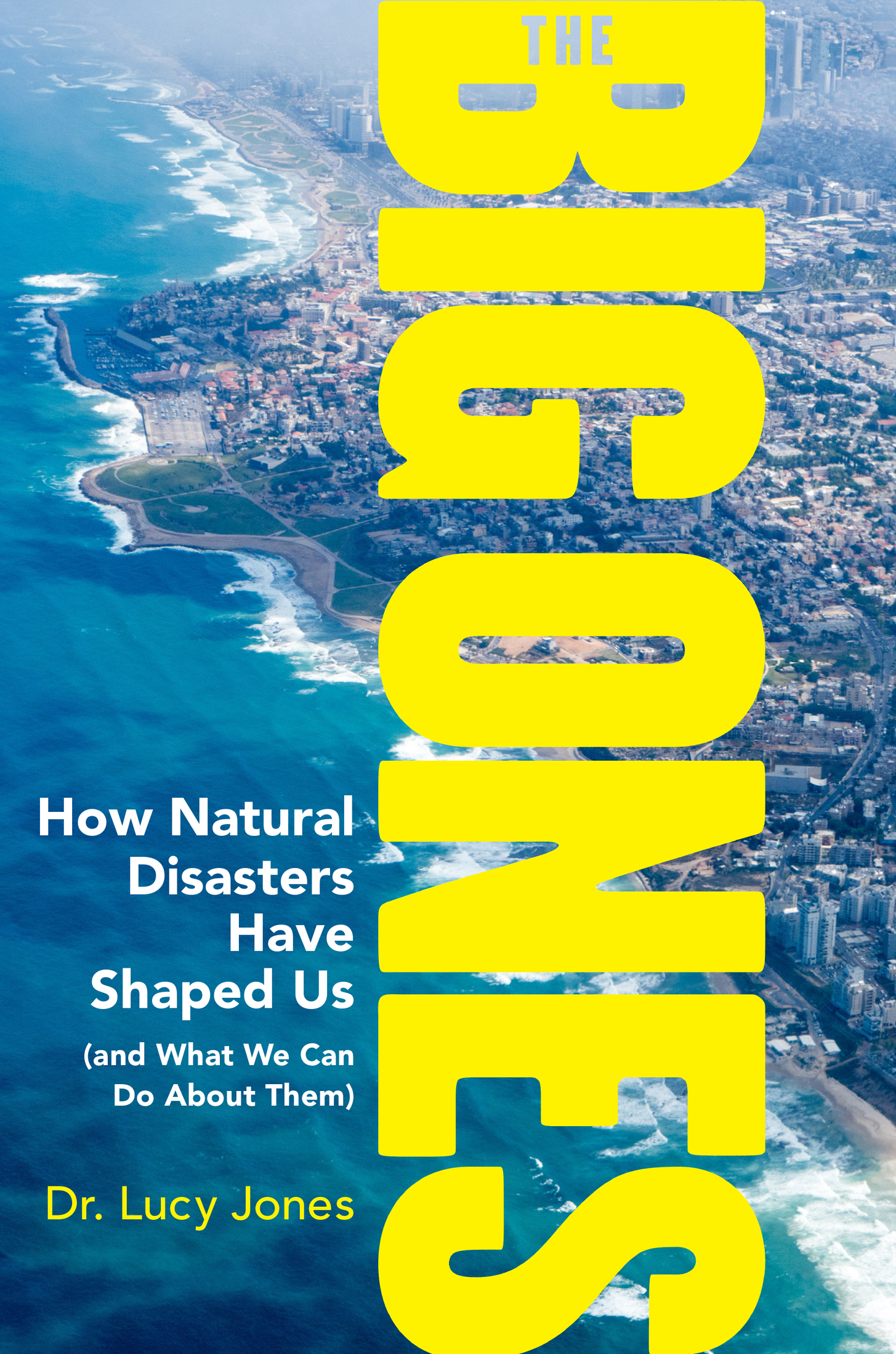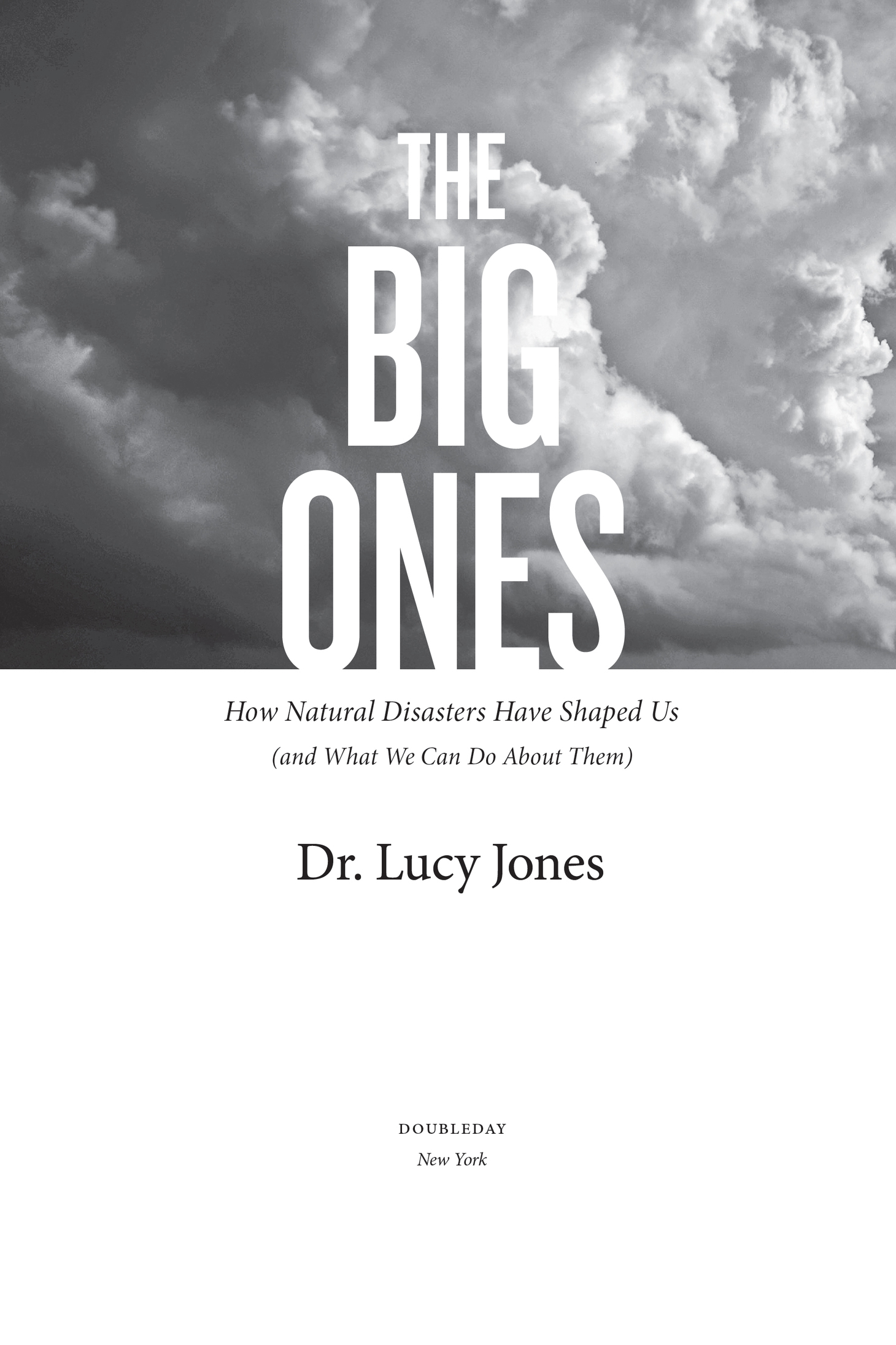INTRODUCTION
IMAGINE AMERICA WITHOUT LOS ANGELES
Earthquakes are happening constantly around the world. The seismic network that measures earthquakes in Southern California, where I live and spent my career as a seismologist, has an alarm built into it that goes off if no earthquake has been recorded for twelve hoursbecause that must mean theres a malfunction in the recording system. Since the network was put into effect in the 1990s, Southern California has never gone more than twelve hours without an earthquake.
The smallest earthquakes are the most common. Magnitude 2s are so small they are felt only if someone is very nearby their epicenter, and one happens somewhere in the world every minute. Magnitude 5s are big enough to throw objects off shelves and damage some buildings; most days a few of these strike somewhere. The magnitude 7s, which can destroy a city, occur more than once a month on average, but luckily for humanity, most take place underwater, and even those on land are often far from people.
But for more than three hundred years, none of these, not even the tiniest, has occurred on the southernmost part of the San Andreas Fault.
Someday that will change. Big earthquakes have happened on the southern San Andreas in the past. Plate tectonics hasnt suddenly stopped; it is still pushing Los Angeles toward San Francisco at the same rate your fingernails growalmost two inches each year. Even though the two cities are in the same state and on the same continent, they are on different tectonic plates. Los Angeles is on the Pacific plate, the largest of the worlds tectonic plates, stretching from California to Japan, from the Aleutian Arc of Alaska to New Zealand. San Francisco is on the North American plate, which extends east to the Mid-Atlantic Ridge and Iceland. The boundary between them is the San Andreas Fault. It is there that the two plates get carried slowly past each other; their motion cannot be stopped any more than we could turn off the sun.
In a strange paradox, the San Andreas produces only big earthquakes because it is what seismologists consider a weak fault. It has been ground so smooth, across millions of years of earthquakes, that it no longer has rough spots to stop a rupture from continuing to slip.
To understand the mechanics of it, imagine youve laid a large rug on the floor of a room that has wall-to-wall carpeting. After placing it, you decide that, on second thought, you want to move it one foot closer to the fireplace. If it had been laid on a hardwood floor, it would be easy enough to move: you could simply grab the side nearer to the fireplace and pull. But its on carpeting, so the friction between the carpet and the rug makes that impossible. What could you do? You could go to the far side of the rug, pick it up off the carpeting, and put the edge of the rug where you want it, a foot closer to the fireplace. You now have a big ripple, which you could push across the rug until youve reached the end, at which point the entire rug would be one foot closer to the fireplace.
In an earthquake, a seismologist sees not a ripple but a rupture front. The motion of that ripple across the rug of the San Andreas Fault creates the seismic energy that we experience as an earthquake. It is a temporary local reduction in friction, allowing a fault to move at lower stress. In the same way that the rug couldnt move all at once, an earthquake too must begin at one particular spot on its surface, its epicenter, and the ripple must roll across it for some distance.
The distance the rupture front travels is one of the chief determinants of an earthquakes size. If it moves a yard and stops, it is a magnitude 1.5 earthquake, too small to be felt. If it goes for a mile down the fault and stops, its a magnitude 5, causing a little damage nearby. If it goes on for a hundred miles, it is now a magnitude 7.5, causing widespread disruption.
The San Andreas Fault has been smoothed to such a degree that now, when an earthquake begins, there is nothing left to keep it small. The ripple will continue to move down the fault, radiating energy from each spot it crosses, creating an earthquake that lasts for a minute or more and a magnitude that grows to 7 or even 8. Only after such an earthquake has broken the fault and made new jagged edges can it begin to produce smaller, less damaging earthquakes.
So we wait for that big earthquake. And wait.
The southernmost part of the fault had its last earthquake sometime around 1680. We know this because it offset the edges of Lake Cahuilla, a prehistoric lake in much of what is now the Coachella Valley, filling with water the flats where the Coachella music festival meets each year. It left behind geologic markers, as did previous earthquakes, so we know that there were six earthquakes between AD 800 and 1700. That means the 330 years since the last earthquake on this part of the San Andreas is about twice the average time between its previous earthquakes. We dont know why we are seeing such a long interval. We just know that plate tectonics keeps on its slow, steady grind, accumulating more offset and energy to be released the next time. Since the last earthquake in Southern California, about twenty-six feet of relative motion has been built up, held in place by friction on the fault, waiting to be released in one great jolt.








